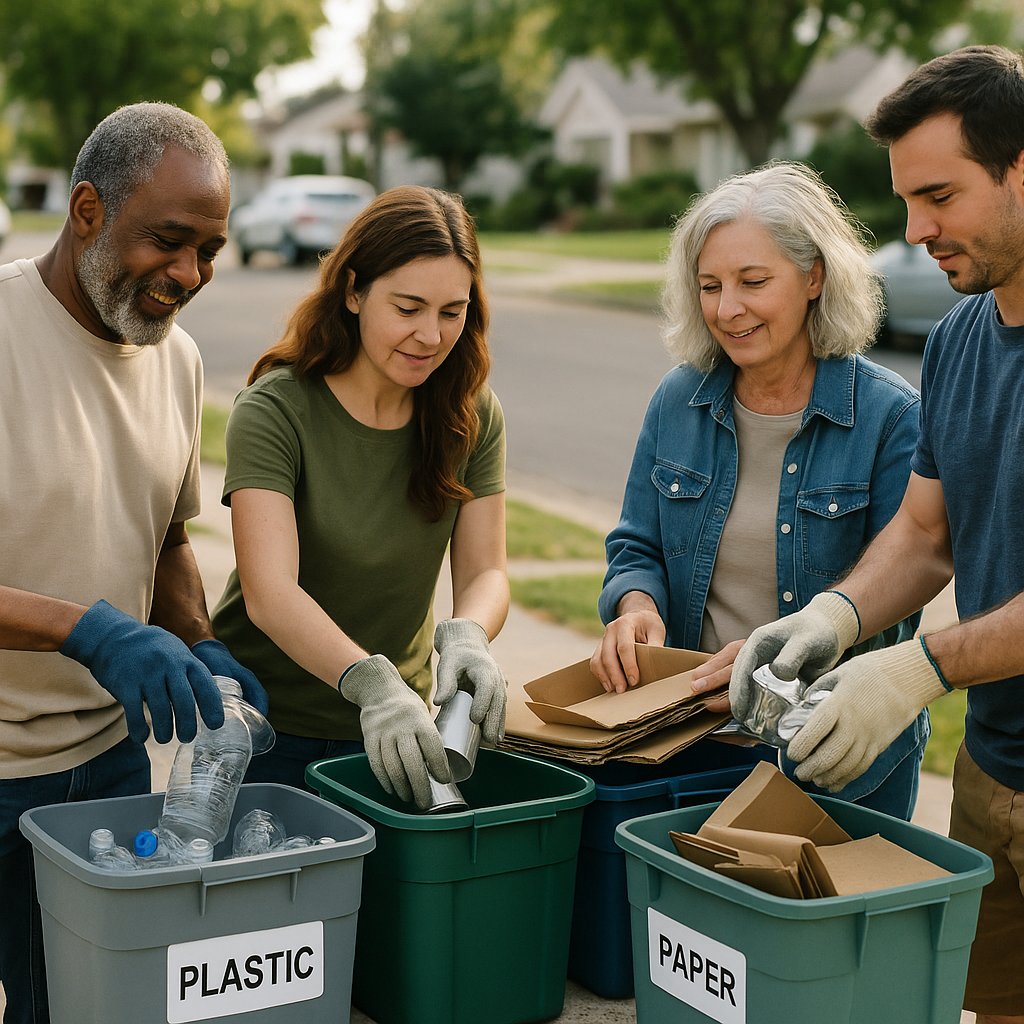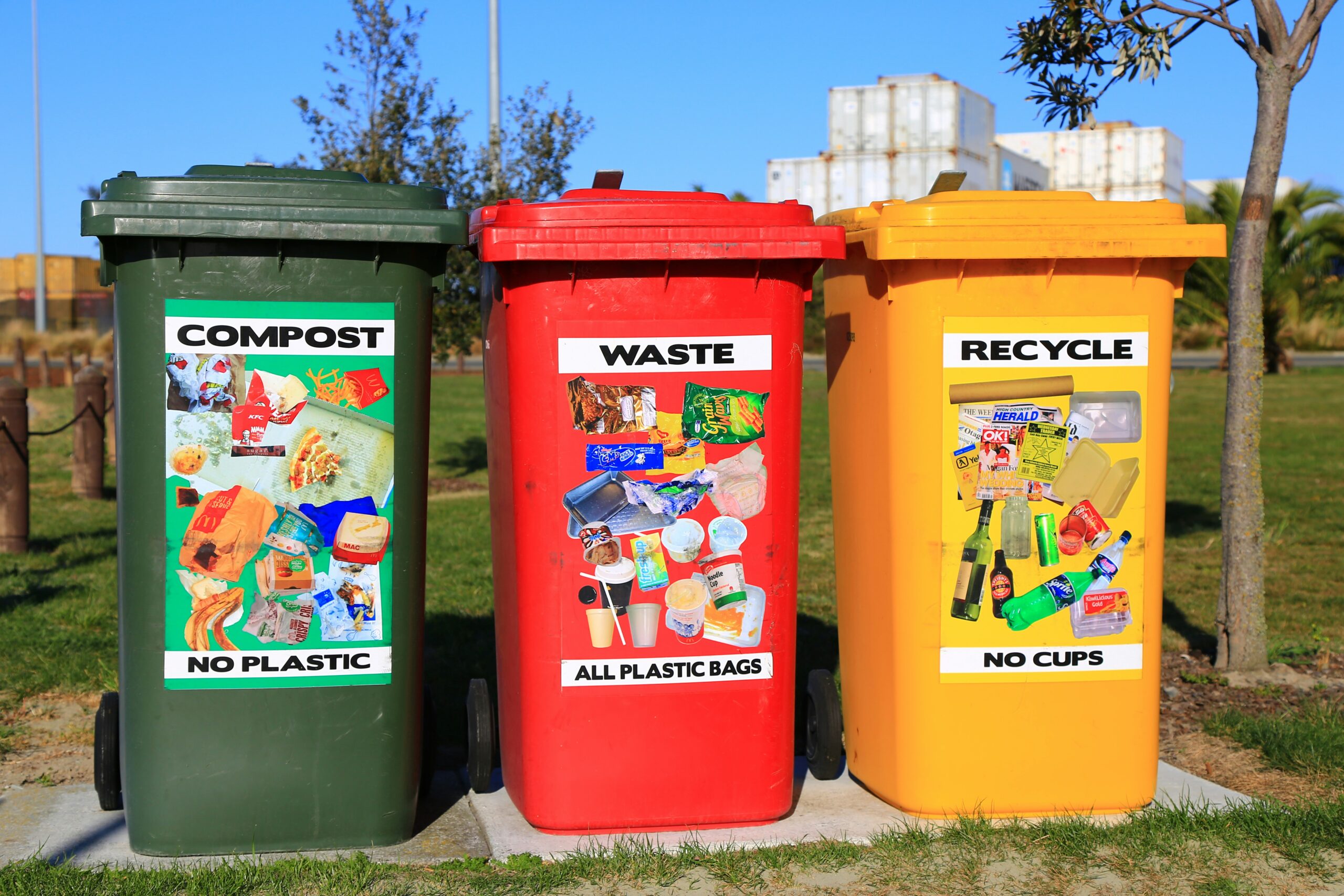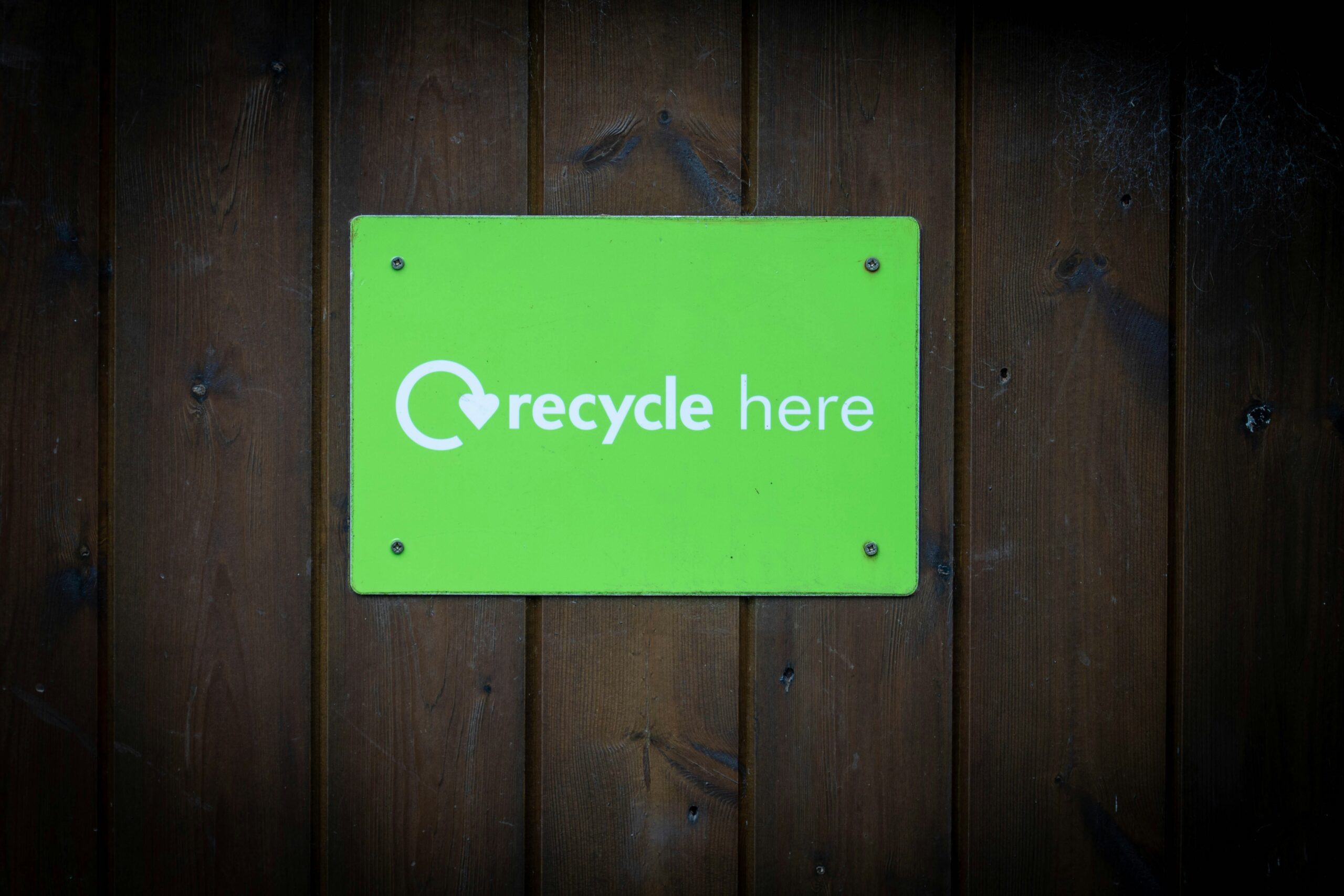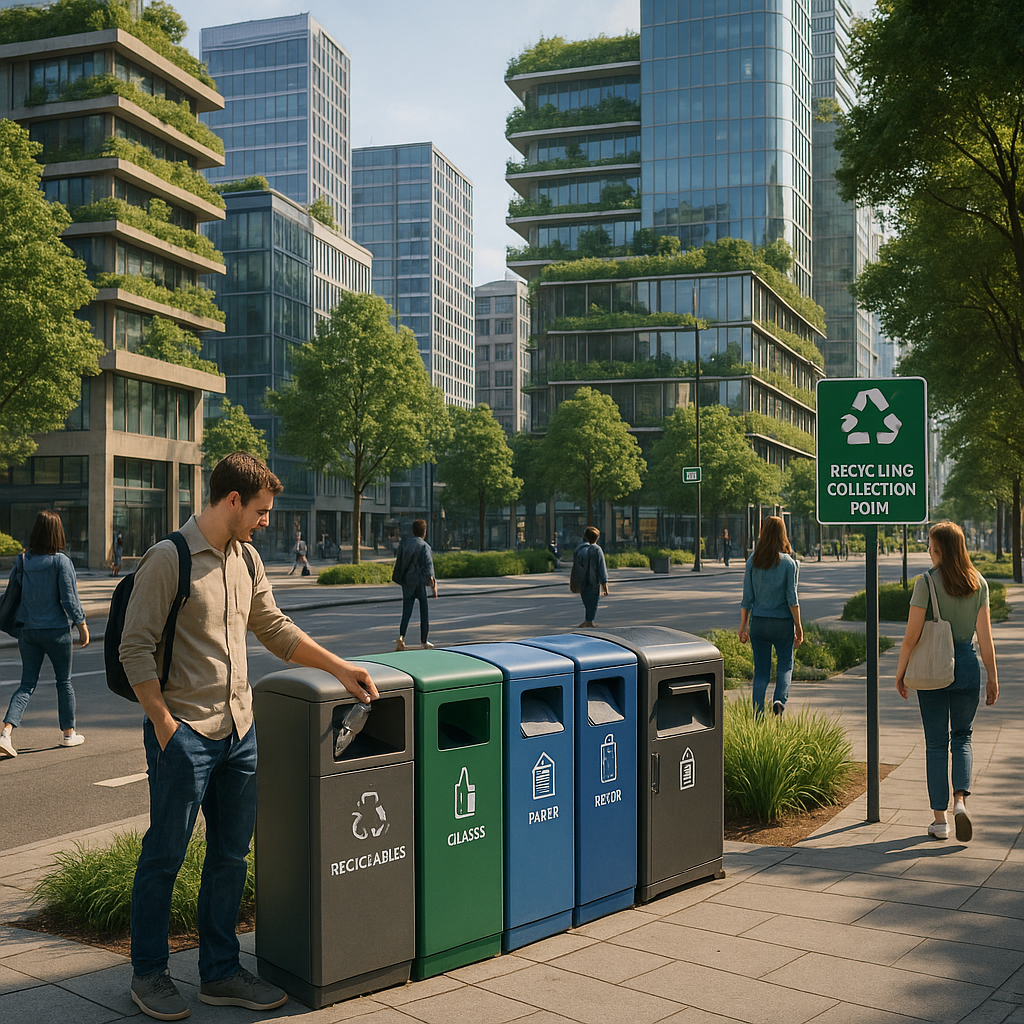5901 Botham Jean Blvd, Dallas, TX 75215
What Are the Benefits of Recycling in the Community?
May 22, 2025Each year, communities in the southeastern United States dispose of over $1.2 billion worth of recyclable materials in landfills. This not only represents waste but also missed opportunities for economic growth, environmental protection, and community development.
Recycling is a cornerstone of sustainable community development. Strong recycling programs pave the way for healthier neighborhoods, stronger local economies, and improved environmental conditions.
What benefits does recycling bring to your community? It goes beyond reducing trash. From creating jobs to preventing greenhouse gases, recycling turns potential waste into valuable resources that strengthen community bonds and support sustainable growth. Is your community fully utilizing these benefits?
How Does Recycling Foster Healthy Neighborhoods?

With manufacturing jobs moving overseas, communities face challenges in creating new, high-paying employment opportunities. Recycling programs have emerged as a powerful solution. Communities with strong recycling initiatives often attract sustainable industries that value environmental responsibility.
A commitment to recycling signals a broader dedication to quality of life, making neighborhoods more appealing to companies that reprocess recyclables and suppliers who incorporate these materials into their products. The Environmental Protection Agency‘s studies confirm that recycling industries typically offer higher-paying jobs than national averages while preventing valuable commodities from ending up in landfills.
The economic impact of recycling on local communities is substantial. According to research from South Carolina, every 1,000 tons of materials recycled represents approximately 1.68 new jobs created. This translates to an economic impact of $236,000 and generates nearly $80,000 in personal income. Additionally, these same 1,000 tons produce about $3,700 in additional tax revenue for local governments.
Recycling programs also reduce the need for landfills, addressing the common “not in my backyard” opposition to waste disposal facilities. Communities with high recycling participation rates experience fewer concerns about diminished property values and potential environmental contamination associated with landfills.
The job creation aspect of recycling extends across various skill levels and industries. While waste disposal transfers trash to landfills, recycling gives materials new life, creating employment opportunities throughout the process. These jobs range from collection and sorting to marketing commodities and manufacturing new products from recycled materials.
North Carolina provides a compelling example of recycling’s economic potential. Between 1994 and 2004, recycling jobs in the state increased from 8,700 to 14,000, while traditional manufacturing jobs declined significantly from 817,300 to 577,400. This trend highlights how recycling has become a growing sector even as other industries contract.
The financial benefits extend beyond job creation. In 2007, Kinston, North Carolina saved $100,000 in fuel and labor costs by implementing an improved recycling program. The city transitioned from small 18-gallon containers to 95-gallon wheeled carts with automated collection, creating cost savings and increasing resident participation rates.
Recycling programs contribute to community health in less obvious ways. By reducing greenhouse gas emissions associated with manufacturing from raw materials, these initiatives help improve air quality. According to recycling advocacy organization RE3.org, paper recycling reduces air pollution by up to 74% compared to producing paper from virgin materials.
| Economic Metric | Value per 1,000 Tons Recycled |
|---|---|
| Jobs Created | 1.57 |
| Wages Generated | $76,000 |
| Tax Revenue | $14,101 |
Strong recycling programs foster business ecosystems where one company’s waste becomes another’s resource. For example, the Catawba County EcoComplex in North Carolina demonstrates “bio-mimicry” industrial development. This integrated facility generates power from landfill methane and houses businesses that use each other’s by-products, creating a closed-loop system that maximizes resource efficiency while minimizing environmental impact.
Ultimately, recycling programs strengthen neighborhoods by creating jobs, generating tax revenue, improving environmental quality, and attracting sustainable industries. Communities that prioritize recycling demonstrate their commitment to a higher quality of life, making them more appealing places to live and work.
What Environmental Improvements Result from Community Recycling?

Community recycling programs deliver significant environmental benefits, extending beyond merely diverting waste from landfills. When communities prioritize recycling, they enhance local environmental quality and contribute to broader sustainability goals.
A key environmental improvement is the reduction of greenhouse gases (GHG). Recycling lessens the need for extracting and processing raw materials, which requires more energy than using recycled materials. This energy savings directly reduces carbon emissions. According to EPA data, recycling and composting municipal waste saved over 190 million metric tons of carbon dioxide equivalent in 2018 alone.
Air quality improvements are another crucial benefit of community recycling efforts. Manufacturing from raw materials generates significant air pollution through industrial processes. In contrast, recycling drastically reduces these emissions. Research indicates that paper recycling can cut air pollution by up to 74% compared to producing paper from virgin materials.
Water Quality Enhancements
Community recycling programs also improve water quality in local waterways. Manufacturing from raw materials often involves water-intensive processes and can release pollutants into water systems. Recycling significantly reduces these impacts. For example, recycling one ton of paper can save approximately 7,000 gallons of water and eliminate manufacturing wastes that would typically enter the water supply.
The extraction of raw materials often disturbs natural landscapes and can contaminate groundwater through mining operations. By reducing the demand for these materials, recycling helps protect water sources from potential contamination.
Landfill Reduction Benefits
Perhaps the most visible environmental improvement is landfill reduction. Communities with robust recycling programs send significantly less waste to landfills, which brings multiple ecological advantages. Landfills produce methane, a greenhouse gas 25 times more potent than carbon dioxide, as organic waste decomposes without oxygen.
Beyond emissions concerns, landfills often face community opposition due to worries about property values, aesthetic impacts, and potential environmental hazards. The White House Task Force reports that recycling prevents approximately 195 million cubic yards of materials from entering landfills annually—equivalent to the space of 92 large landfill facilities.
Recycling also helps preserve natural habitats that might otherwise be cleared for new landfill sites. As existing facilities reach capacity, communities without effective recycling programs face difficult decisions about where to place new waste disposal sites. Each acre preserved through recycling represents critical habitat for local wildlife and plant species.
Energy Conservation
The energy savings from community recycling create cascading environmental improvements. Manufacturing products from recycled materials typically requires significantly less energy than producing them from raw resources. For instance, recycling aluminum saves approximately 95% of the energy required to produce new aluminum from bauxite ore.
These energy reductions lead to lower fossil fuel consumption and fewer emissions from power generation facilities. Communities with high recycling participation rates effectively reduce their carbon footprint even without directly measuring these upstream benefits.
The environmental improvements from community recycling programs create measurable differences in local air quality, water purity, habitat preservation, and climate impact. These benefits increase with community participation rates, making recycling one of the most accessible and effective environmental protection strategies available to municipalities.
| Environmental Benefit | Description |
| Waste Reduction | Diverts waste from landfills, reducing landfill use and associated environmental impact. |
| Greenhouse Gas Reduction | Minimizes the need for raw material extraction, saving energy and reducing emissions. |
| Air Quality Improvement | Reduces air pollution by decreasing emissions from manufacturing processes. |
| Water Quality Enhancement | Reduces pollutants entering water systems by minimizing raw material extraction. |
| Energy Conservation | Significantly less energy is used in manufacturing with recycled materials compared to raw materials. |
How Does Recycling Boost the Local Economy?

Recycling programs generate significant economic benefits beyond environmental protection. The recycling sector creates jobs at every stage of the process. Collection, sorting, processing, and distribution of recyclable materials all require a workforce, contributing to substantial employment opportunities within local communities.
The job creation potential of recycling surpasses traditional waste management methods. Recycling produces more jobs per ton of waste than landfilling or incineration, spanning various skill levels and industries, from collection drivers to processing technicians to sales representatives.
Many positions within recycling industries offer competitive wages. Workers in specialized recycling sectors often earn higher than national average salaries, strengthening local purchasing power and contributing to community stability.
Recycling stimulates broader economic growth by creating demand for supporting services. Equipment manufacturers, technology providers, and transportation companies all benefit from a robust recycling infrastructure. This multiplier effect amplifies the economic impact beyond direct recycling jobs.
Communities derive direct financial benefits from recycling programs through the sale of processed materials. When market conditions are favorable, municipalities can generate revenue by selling collected recyclables to manufacturers, creating a circular flow of materials and money within the local economy.
The economic advantage extends to cost avoidance as well. Communities that effectively recycle reduce expenses associated with landfill management and waste disposal, with savings accumulating over time as landfill tipping fees rise nationwide.
Recycling revenues can be reinvested into community development. Many municipalities channel these funds toward essential public projects. Parks, bike paths, educational grants, and community centers often receive funding from recycling-generated revenue streams.
Recycling also helps localize production processes. When materials are recovered locally, they can be reprocessed into new products within the same region, localizing economic activity and reducing dependency on imported materials.
The remanufacturing sector represents another economic opportunity stemming from recycling. Companies that restore used products to like-new condition create additional jobs while further reducing waste, providing sustainable alternatives to imported, low-quality disposable products.
Local economies become more resilient through recycling and remanufacturing. These sectors create economic diversity that helps communities weather economic downturns. When combined with other sustainability initiatives, recycling programs contribute to a more stable economic foundation.
Revenue Generation Through Material Recovery
The market value of recycled materials fluctuates but can provide significant income for communities. Paper, metals, and certain plastics command consistent market value. When properly sorted and processed, these materials become valuable commodities.
Aluminum recycling offers particularly strong economic returns. The energy savings from recycling aluminum versus producing it from raw materials makes recycled aluminum highly valuable. Communities with effective aluminum collection systems often see the highest material revenue returns.
Electronic waste represents another high-value recycling stream. Precious metals recovered from electronics recycling can generate substantial revenue. Communities implementing e-waste collection programs tap into this valuable resource stream while preventing hazardous materials from entering landfills.
Revenue potential increases with clean, well-sorted materials. Communities that invest in education programs to reduce contamination maximize their return on recycling efforts, creating a virtuous cycle where better quality recycling leads to higher revenues.
Many municipalities have developed revenue-sharing agreements with processing facilities. These partnerships allow communities to benefit directly from the value of collected materials, incentivizing comprehensive collection efforts and public participation.
The economic value of recycled materials extends beyond direct sales. Manufacturers who use recycled content often experience cost savings compared to virgin material sourcing. These savings can translate into more competitive local businesses and additional job creation.
[[artifact_table]] Economic Impact Comparison: Jobs Created Per 10,000 Tons of Material [[/artifact_table]]Community Reinvestment Opportunities
Recycling revenue presents unique opportunities for strategic community investment. Unlike general tax revenue, these funds often come with fewer restrictions, allowing communities to address specific local priorities through targeted investments.
Infrastructure improvements frequently benefit from recycling revenue. Road repairs, water system upgrades, and public building maintenance receive funding that might otherwise be unavailable, supporting broader economic development goals.
Many communities direct recycling funds toward environmental initiatives. Urban green spaces, tree planting programs, and waterway cleanups enhance community livability, improving quality of life and potentially increasing property values.
Educational programs also benefit from recycling revenue reinvestment. School grants, environmental education centers, and vocational training programs prepare communities for future economic opportunities, building human capital alongside physical infrastructure.
Alternative transportation projects often receive funding through recycling revenue streams. Bike lanes, walking paths, and public transit improvements reduce transportation costs for residents and make communities more accessible while reducing environmental impacts.
Public health initiatives also benefit from recycling-generated funds. Community wellness programs, air quality monitoring, and environmental health research protect residents while reducing healthcare costs, producing long-term economic benefits beyond their immediate impact.
Business incubation programs focused on sustainability represent another reinvestment opportunity. Supporting entrepreneurs who create products from recycled materials completes the circular economy loop, creating additional jobs while finding new uses for recovered materials.
How Does Recycling Bring Communities Together?
Recycling initiatives serve as catalysts for community unity. When residents join local recycling programs, they engage in collective action that transcends individual benefits. This shared commitment creates bonds between neighbors who might otherwise have limited interaction.
Community-wide recycling campaigns bring diverse groups together around a common goal. Programs like curbside recycling make participation accessible to everyone, regardless of socioeconomic status. When communities organize phone book recycling drives or electronic waste collection events, they create opportunities for meaningful social connection while addressing environmental concerns.
The social impact of community recycling extends beyond waste reduction. Local recycling events foster a sense of belonging and purpose among participants. Volunteers at collection sites often develop friendships while contributing to a cleaner environment. These connections strengthen neighborhood ties and build social capital.
Creating a Culture of Environmental Stewardship
Successful recycling programs transform how community members view their relationship with the environment. When residents see others separating recyclables or participating in clean-up events, it normalizes sustainable behaviors. This visibility helps establish environmental stewardship as a community value rather than just an individual choice.
Educational workshops about proper recycling practices bring people together to learn and share knowledge. These gatherings create spaces for dialogue about broader environmental issues facing the community. The resulting awareness often inspires collective action beyond recycling, such as habitat restoration or energy conservation initiatives.
Local schools play a vital role in fostering this culture. When students learn about recycling and bring these lessons home, they become environmental ambassadors within their families. School recycling competitions engage young people while creating community-wide conversations about sustainability.
Building Local Pride Through Visible Results
Communities that prioritize recycling often experience tangible improvements in their local environment. Cleaner streets, reduced litter, and well-maintained public spaces become sources of community pride. These visible outcomes reinforce the value of collective effort and encourage continued participation.
Many communities celebrate their recycling achievements through public recognition. Annual reports highlighting waste diversion rates or sustainability awards acknowledge community-wide accomplishments. These celebrations strengthen residents’ identification with their community and its environmental values.
The economic benefits of recycling can also foster local pride. Recycling programs create jobs in collection, sorting, and processing. Communities that develop robust recycling industries see their sustainability efforts translate into economic vitality. This connection between environmental action and community prosperity reinforces the value of recycling programs.
| Benefit | Description |
| Job Creation | Recycling creates more jobs per ton of waste than landfilling or incineration, spanning various skill levels. |
| Economic Growth | Recycling stimulates local economies by creating markets for recycled materials and generating tax revenue. |
| Environmental Protection | Reduces landfill waste and greenhouse gas emissions, conserves natural resources, and improves air and water quality. |
| Community Engagement | Fosters a sense of responsibility and unity by involving residents in sustainability initiatives. |
| Cost Savings | Reduces expenses associated with landfill management and waste disposal, and generates revenue from the sale of recyclables. |
Overcoming Challenges Together
Effective community recycling programs require overcoming shared challenges. Contamination issues in recycling streams present opportunities for neighbors to educate each other about proper sorting practices. When communities address these problems collectively, they build problem-solving skills that extend to other community issues.
The logistics of recycling collection often require collaboration between residents, local government, and businesses. These partnerships create relationships that strengthen community infrastructure. When stakeholders work together to optimize recycling systems, they develop cooperative skills applicable to other community initiatives.
Even recycling program setbacks become opportunities for community bonding. Market fluctuations or policy changes that affect recycling operations require adaptive responses. Communities that navigate these challenges together develop resilience and strengthen their collective identity.
Conclusion: Embracing Recycling for a Sustainable Future

Recycling is essential for community sustainability, offering significant environmental benefits by reducing landfill waste, conserving resources, and cutting greenhouse gas emissions. Communities that focus on recycling programs not only create cleaner environments but also build economic resilience through job creation and cost savings. These efforts extend beyond environmental protection, fostering community unity around shared sustainability goals.
Achieving a sustainable future requires collective action and a commitment to responsible waste management. Each recycled item is a step toward preserving our planet for future generations. For assistance with implementing effective recycling solutions for your business or municipality, contact Okon Recycling at 214-717-4083.
